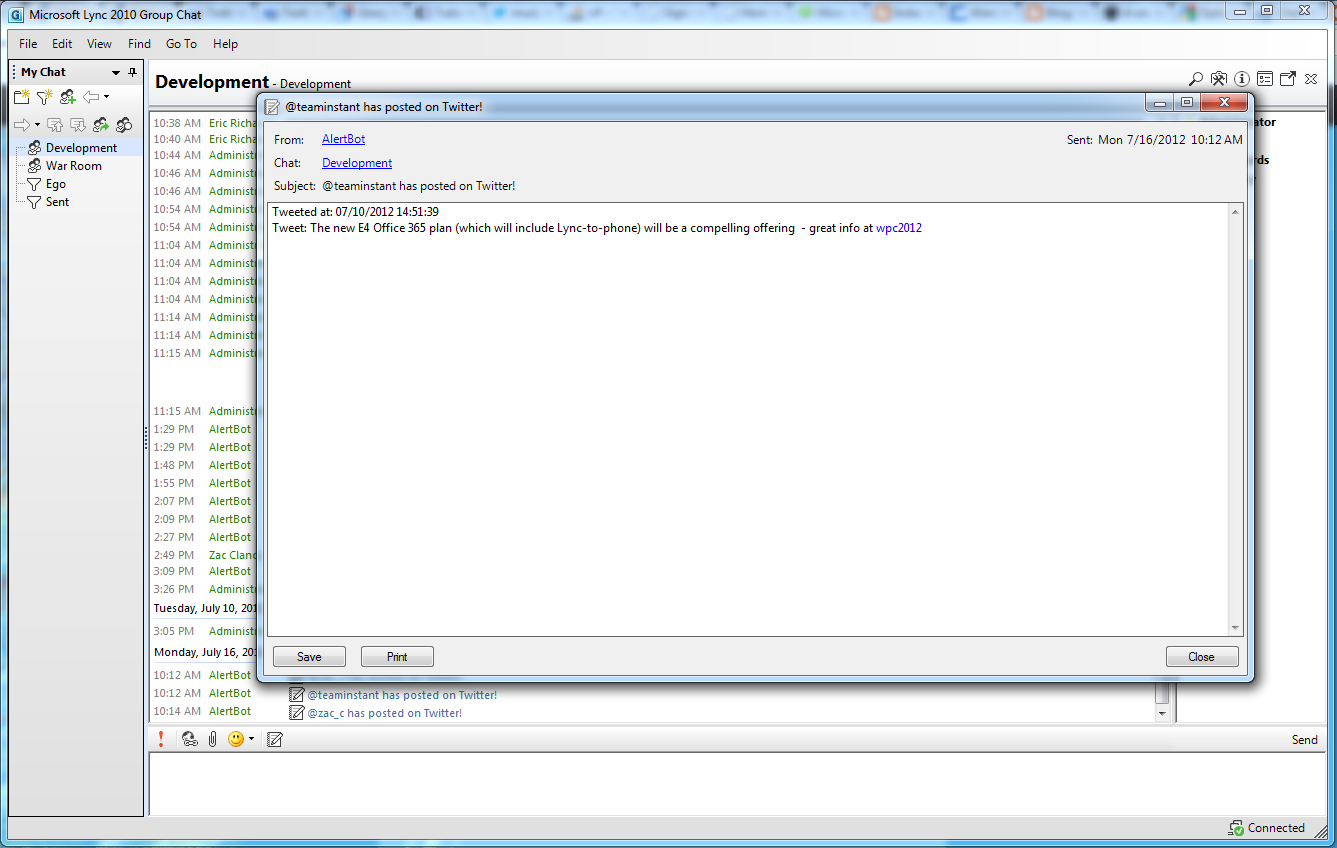

Microsoft Lync 2010 Group Chat can be used across teams of any size, allowing customers, business partners and employees to actively participate in the making of a project. Moreover, with the aid of various filters, you can impose certain messaging conditions based on keywords in order to receive notifications whenever a topic matching your values is being discussed. Members of a chat room can be a part of several concurrent conversations, within which the use of links and documents is permitted. You try to add a user who is in a nested distribution list or in a distribution.

The interface of the chat is quite appealing, delivering access to chat rooms, as well as the history of the messaging sessions. You sign in to the Microsoft Lync Server 2010 Group Chat Administrator Tool. The advantage of Microsoft Lync 2010 Group Chat is that it enhances the dynamics of a team, through real time conversations that can occur regardless of the participants’ location. group chat, data conferencing, disclaimers to end users, ethical walls. As opposed to Lync 2013, which encases the chat component inside the client interface, this little component runs separately from the server, but makes use of it nonetheless. Actiance VantageTM for Microsoft Lync Server 2010 addresses the security. However, starting with the 2013 edition, Microsoft Lync bundles built-in support for group messaging, which is provided within a component named Persistent Chat.ĭespite this, Microsoft Lync 2010 Group Chat is still usable, targeting audiences that are still relying on Lync Server 2010 within their organization. Microsoft Lync 2010 Group Chat was designed as an enhancement for Lync Server 2010 and is available for download separately from the standard Lync package.

This means that the messages inside chat rooms will be available to all the members of the group regardless of whether they were offline at the time they were posted.
Microsoft lync group chat software#
Microsoft Lync 2010 Group Chat is a powerful software solution that enables Lync users to enjoy centralized messaging sessions, where the conversations persist over time.


 0 kommentar(er)
0 kommentar(er)
